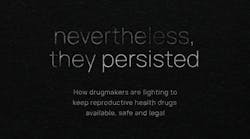Although the future is difficult to predict, if we observe what is happening around us carefully, the tea leaves can be read with enough clarity to make some plausible projections. Most veteran Pharma observers, me included, might say reading such leaves for the companies and others working Pharma’s various segments and then making predictions, is not for the faint-hearted. Nevertheless, looking across the pharma landscape in 2016 there are features, milestones and similar way points that offer the basis for predictions 10 years hence. The following commentary and conclusions are based on the changes we are experiencing right now.
PAST & PRESENT
Over the last century, traditional Brand/ethical global pharmaceutical companies started to serve the needs of patients. Their model had been to discover and produce drugs under the scrutiny of regulators. Patents were their friends. Major markets were patients in the developed countries. High prices of drugs and their availability in the developing countries made wider distribution and consumption rather difficult. Most of the imported drugs were/are for the elite. A void was created. Companies in the developing countries reverse engineered the processes to produce drugs for the needy. These ventures flourished but became painful for the original drug discoverers as sometimes they encroached on their intellectual property and sales. In 1995 the World Trade Organization’s TRIPS guidance was promulgated 1. TRIPS changed the pharmaceutical landscape in 2005 with companies from the developing countries being able to supply generic drugs to the developed countries. Compulsory licensing was part of the negotiated settlement.
Prior to TRIPS, many generic companies in more developed countries produced drugs once their patents had expired and branded pharmaceutical producers accepted this scenario. Entry of generic companies from these developing countries changed the landscape even more but branded Pharma, busy creating blockbuster drugs (more than billion dollar sales per year) and making profits that were/are much higher than similarly capitalized manufacturers in other industries. Those were good times.
In the last few years clouds started appearing. Pharma’s realized the blockbuster drug model will be difficult to sustain and there are few of late, it seems, who want to acknowledge this publicly as they seemingly cling to the old model. Faltering revenues led branded producers to focus their R&D efforts on life style, lipid control, infectious, neglected or orphan diseases and biotech drugs. Revenue and profits spigot ran full force. Negotiated prices in many countries have put a damper on their revenues and profitability. Except for few drugs, most of the orphan and neglected disease drugs are for less than 200,000 patients worldwide. They are very high priced and extend life by few months or have to be taken forever, thus becoming a financial burden even for those who can afford them. Biotech drugs could be for a larger population only if their performances are significantly better than small molecule drugs. One thing is for sure irrespective of the patient population most of the new drugs will be priced much higher than the current drugs for the same diseases.
Over the past five years the FDA 2 approved about 182 new drugs. At this point there’s no telling how many of these would be considered commercial success. It has been forecast that the new launches would have sales of about $80 billion dollars in the next five years 3. Their actual sales are not known. Sales of $80 billion for the 50 of the 182 drugs 3 suggest that average sales per drug per year would not be a celebratory number but a very marginal success at best.
Every year new FDA drug approvals are written about and applauded 4. However, these news items never discuss how many of these drugs are successfully commercialized, their revenue-generating potential and most importantly: how many patients benefit per year.
Pharma’s prevailing business model, even when creating drugs for a limited patient base, has not changed as it generates necessary revenue and profit growth. Significant monies have been made through high prices and raising them5 as often as possible. This cannot continue even in the U.S., the world’s largest pharmaceutical market. Based on the industry’s landscape one would consider sharpening their pencil as days of such largesse could be numbered.
FUTURE
Going forward I see the landscape changing. There are fewer drugs in the pipeline that potentially are significantly better and completely eliminate the use of existing drugs for the same diseases. New drugs are going to be marginally better but at a higher price3,5,6 and used by a limited population. I am not sure of the solution for this quandary, as the drug efficacy cannot be predicted. However, one thing is for sure and that is companies will have to be careful about their drug development model. Unless better than 50 percent of the approved drugs are a commercial success investors and shareholders will start asking many hard and difficult questions.
For every new drug under development, the following questions should be raised:
1. What is the efficacy of the drug over therapies currently available?
2. Are drugs affordable?
3. How many patients have benefited from these drugs?
It’s worth noting that very few new drugs will have patient base of 10 million or more. Orphan/neglected/cancer treatment drugs will be for a limited population and very high priced (i.e., unaffordable to many patients) thus necessitating tougher consumer choices. Many branded drugs of yester-year are set to go off patent soon dampening brand revenues. These represent opportunities for generics manufacturers.
Thus, the waning pipeline and limited patient base are not enough to sustain the current business model (year over year increasing revenue and higher profits) of typical branded pharmaceutical companies. Biopharmaceuticals might replace some of the lost revenue and profits, but not by much for reasons enumerated earlier. There are forecasts 7 of about $70 billion dollar sales increase year-over-year for the next five years. I have serious doubts about this proposed reality as explained 8.
Recent mergers appear to be based more on financial engineering goals rather than on operational or product synergies. Besides tax benefits, projected cost reductions do not seem to be enough on their own to justify these investments. In addition, such maneuvers can take the companies only so far. It is possible that some of the investors might start questioning the current R&D spending and even the company’s current business model.
Patients, with the help of Internet, have become smarter drug consumers. In addition, physicians are not supporting exorbitant prices 9. This may prompt branded Pharma companies to look long and hard at other methods/model sustain growth and profits 8. There are options, however. One thing for sure is that, unless drugs serve significantly large population base, their mere viability would be threatened and questioned.
As stated earlier many current blockbuster therapies will lose patent protection in the next 2-5 years. Dwindling numbers of drugs in drying pipelines are likely to slow the growth of new opportunities for the generic companies. Going forward Generic Pharma will have to create new opportunities of their own. This could come through consolidations; trying to capture larger patient base from existing drugs. For the companies that can capitalize on the opportunity, it could generate a big win.
Generic consolidation may deliver new economies of scale and stiffened competition. Competition (Pharma might want to check Wikipedia for a definition) may prompt the adoption of improved manufacturing technologies in pursuit of better product quality and ultimately better, more efficient and cost-effective operations. All this should drive lower drug prices. Regulators will have to participate in encouraging adoption of better technologies10. The best naturally will survive and even thrive. PBMs could emphasize and capitalize on the opportunity and also force consolidations. Compulsory licensing or negotiated lower drug pricing in the developing countries could become the norm11. This would add additional political and economic pressure on the drug developers.
As I offered at the start of this essay, tomorrow is difficult to predict because it rarely ever comes exactly the way we imagine it might. However, by looking at and recognizing all that is happening or has happened in our industry over the last five years or so, one can begin to plan for tomorrow today, rather than wait for whatever is coming to arrive. Pharma companies, to be successful will have to become more introspective and act decisively to develop and implement viable strategies (were the size of the patient base could be a defining parameter) if the Pharma companies of today want to be the Pharma companies of tomorrow in 2026.
REFERENCES
- WTO TRIPS guidance, accessed January 7, 2016
- New Drugs at FDA: CDER’s New Molecular Entities and New Therapeutic Biological Products, accessed January 11, 2016
- Ahlawat, Hemant, Chierchia, Giulia and van Arkel, Paul The secret of successful drug launches, March 2014, and Beyond the Storm, 2013, McKinsey & Co. accessed January 8, 2016
- Munos, Bernard: Forbes, accessed January 11, 2016
- Drugmakers Raise Prices Despite Criticisms, accessed January 11, 2016
- Why the U.S. Pays More Than Other Countries for Drugs, accessed January 11, 2016
- Global Medicines Use in 2020: Outlook and Implications November 2015, accessed January 11, 2016
- Malhotra, Girish: Manufacturing technologies and their part to achieve future pharmaceutical salese, Chemistry Today, September 2015, accessed January 11, 2016
- Memorial Sloan Kettering Doctors’ Stance on the High Cost of Cancer Drugs Featured on 60 Minutes, October 14, 2014, accessed January 12, 2016
- Malhotra, Girish: Who Is/Or Should Be Driving Pharma’s Manufacturing Car: Regulators or the Regulated? December 7, 2015 accessed January 11, 2016
- Lowering the Bar On Hep C Meds, Bloomberg Business Week, pg 18-19



